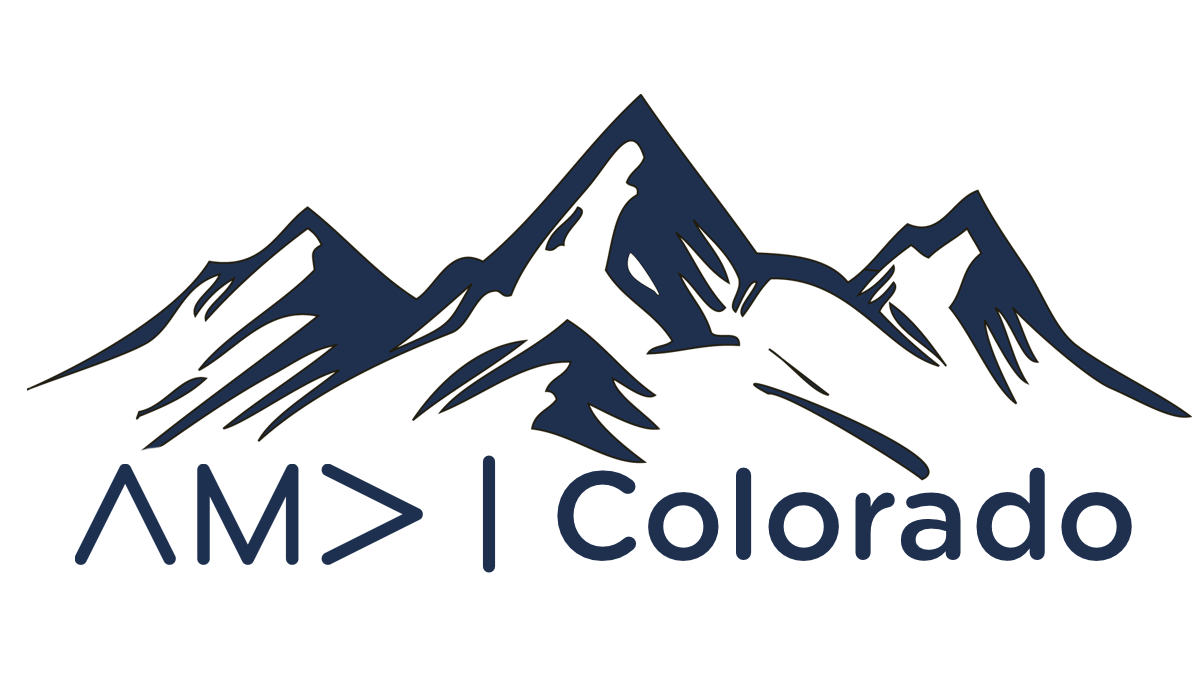Navigating the digital marketing landscape can be complex, but understanding the subtle intricacies between SEO and SEM is crucial for success. This article demystifies the differences with clear, expert-backed explanations that highlight strategic approaches for businesses. Dive into the world of organic growth and paid visibility while gaining actionable insights from industry leaders.
SEO Focuses on Long-Term Organic Strategy
SEO and SEM often get mixed up, but they play distinct roles in a comprehensive digital marketing strategy. SEO is a long-term, organic strategy focused on improving your website’s visibility in search engine results through content optimization, link building, and technical improvements. It’s like planting seeds in fertile soil, nurturing them over time, and eventually reaping the rewards of consistent effort.
On the other hand, SEM is all about quick, paid visibility. It involves running paid ads, usually through Google Ads, to target specific keywords and appear at the top of the search results instantly. Think of it like renting space on a busy street corner; paying for visibility right away, but only as long as you keep paying.
I saw the power of both strategies firsthand when working with a healthcare client who was launching a new service. We had a solid SEO foundation in place, with optimized blog posts and service pages. However, while our organic traffic was growing, we realized it would take a while before we could compete for some of the more competitive, high-converting keywords.
To bridge that gap, we decided to launch a Google Ads campaign targeting those exact high-converting keywords. This gave us immediate visibility, driving qualified traffic to the site almost overnight. As the SEM campaign performed well, we continued refining our SEO efforts, focusing on content and improving technical aspects of the website.
The combined result? The client not only saw a surge in leads from SEM but also benefited from growing organic rankings as the SEO strategy took hold. In six months, the client was ranking for competitive keywords in both paid and organic search, leading to a significant increase in visibility and conversions.
The key takeaway? SEO is vital for long-term growth, while SEM provides immediate traffic and leads. Using both in tandem allows you to secure quick wins while building sustainable success. It’s a strategy that delivers both instant results and lasting impact.
Martynas Siuraitis, SEO Consultant, The SEO Consultant Agency
Combine SEO and SEM for Best Results
We often explain this to our clients using a local business example. SEO is about optimizing your online presence so potential customers find you naturally in search results. When we worked with a local bookstore, we focused on creating valuable content about their rare book collection and local author events. Within six months, they were appearing on the first page for “independent bookstores” in their city—all through organic search traffic.
SEM, on the other hand, involves paid advertising to get immediate visibility. During the bookstore’s children’s section launch, we ran targeted Google ads for “kids’ books San Jose.” While SEO took months to build momentum, these paid campaigns delivered traffic and leads within hours. We’ve found the most effective approach is combining both strategies.
We help clients build long-term organic visibility through SEO while using SEM for specific campaigns and quick wins. One of our tech clients used this dual approach—building industry authority through detailed how-to guides while using targeted ads for their webinars and product launches. Their registration rates doubled with this combined strategy. The key difference? SEO is a long-term investment that builds lasting organic visibility, while SEM offers immediate results but requires continuous ad spend.
Jock Breitwieser, Digital Marketing Strategist, SocialSellinator
SEO for Long-Term, SEM for Quick Wins
SEO and SEM differ mostly in their methodology and speed. SEO is the process of optimizing your website for organic search results with the goal of increasing its long-term visibility and credibility. SEM, on the other hand, involves sponsored advertising at the top of search results, which provides quick visibility but comes at a cost. Depending on your objectives, both can function well together.
I once worked for a startup that was introducing a new product. We first employed SEM to generate immediate traffic and raise awareness during the product launch. Paid advertisements helped to swiftly put the product in front of the target demographic, resulting in leads within days. Meanwhile, we launched an SEO approach that involved developing high-value material on the product’s primary benefits and industry problem points.
Months later, those organic efforts paid off, and the site began ranking for vital keywords, lowering reliance on sponsored advertisements. This combo demonstrated the value of using both strategies. While SEM produced fast results, SEO generated long-term growth, resulting in a well-rounded strategy.
Evgeni Asenov, SEO & Content Lead, Resume Mentor
SEO Builds, SEM Rents Visibility
SEO is building your house, SEM is renting it.
SEO example: We ranked first for “project management software comparison” through detailed comparison content and user reviews—zero ad spend, 342 trial signups monthly. That traffic keeps coming even when we stop working on it.
SEM example: Needed quick results for a new feature launch, ran targeted ads for “agile project tracking”—cost $4k, got 89 trials in two weeks. Instant results, but traffic stopped the moment we paused the ads.
Tim Hanson, Chief Marketing Officer, Penfriend
SEO Grows Traffic, SEM Buys Traffic
SEO and SEM are like two sides of the same coin, but they work differently.
Think of SEO as the long game, it’s like planting a tree. You nurture it by optimizing your website, creating content, and building backlinks. Over time, it grows, and you get that sweet organic traffic without paying for every click. For example, if you write an epic blog post on “Top Marketing Trends for 2025,” you could start ranking on Google for that topic, bringing in leads after a few months.
Now, SEM is more like flipping on a spotlight at a concert, it’s fast, targeted, and gets immediate attention. It’s all about paid ads. Let’s say you’re running a campaign to promote your new service. With SEM, you can launch Google Ads targeting keywords like “best marketing agency near me,” and boom, your ad is right at the top of search results. Instant visibility.
Here’s how they help in real life:
SEO: It’s your steady workhorse. It builds trust and credibility over time. Fun fact: 70% of people click on organic results over ads because they trust them more. Plus, once you’re ranking high, that traffic is basically free!
SEM: It’s your sprinter. Need quick results? SEM is perfect for time-sensitive promos or when you’re launching something new. For example, if you’re targeting local businesses in Chicago, you can run ads just for people searching in that area.
Pro tip: Use both together! While SEO builds your foundation, SEM can give you those quick wins. It’s like having a marathon runner and a sprinter on your marketing team—unbeatable!
Kate Dzhevaga, CMO, Head of Growth, SYMVOLT
SEO Uses Organic, SEM Uses Paid Methods
SEO (Search Engine Optimization) and SEM (Search Engine Marketing) both aim to increase a website’s visibility on search engines, but they differ in their approach. SEO uses organic methods like content marketing and link building to improve ranking in search engine results. SEM uses paid methods, such as advertising, to achieve the same result. For example, SEO might focus on optimizing blog posts to show up higher in search results, while SEM might pay for search advertisements to show up higher in results.
The choice between SEO and SEM can be a tricky one. It depends on several factors, including the business’s goals, budget, and timeframe. However, many businesses choose to use both to maximize their reach.
SEO (Search Engine Optimization)
- Focuses on organic search rankings.
- It involves optimizing website content, improving site speed, enhancing user experience, and building backlinks.
- It takes time to see results but provides long-term benefits without direct ad costs.
Example: Suppose you run an online survey tool (like Scriptbox). By optimizing your website content with relevant keywords like “interactive survey API” and creating blog posts about survey best practices, you can improve your rankings in Google search results, attracting organic traffic without paying for ads.
SEM (Search Engine Marketing)
- Involves paid advertising on search engines (e.g., Google Ads).
- Uses PPC (Pay-Per-Click) campaigns to instantly appear in top search results.
- Provides immediate visibility but requires an ongoing budget.
Example: If you want to quickly attract customers to Scriptbox, you could run Google Ads targeting keywords like “best survey API” or “survey automation software.” This ensures that when potential customers search for these terms, your ad appears at the top, driving instant traffic and potential leads.
Srishti Jain, Sr Marketing Executive, Marcitors
SEO for Trust, SEM for Urgency
SEO and SEM are good ways to get more visibility from search engines, but they work differently. With SEO, businesses try to improve their organic rankings through tactics like content optimization, technical fixes, and earning backlinks. It’s a long-term strategy whose results take time, but they drive sustained traffic without ongoing costs. SEM refers to paid ads (like Google Ads) where you bid for top spots in search results. It’s faster and more flexible, but traffic stops when you pause spending.
SEO builds credibility. For instance, optimizing a blog post to rank higher for “best running shoes” can attract consistent readers over months or years. SEM is ideal for urgency, like promoting a limited-time sale for “running shoes discount code” to capture buyers ready to purchase now.
The best strategies use both. SEO nurtures trust and organic growth, while SEM fills gaps during product launches or competitive seasons. For example, a fitness brand might use SEO to rank for “how to improve endurance” and SEM to target “buy workout gear online” during peak shopping periods. Together, they balance immediate wins with lasting value.
MD. Raisul Islam, Digital Marketing Executive, MeasureMinds Group
SEO for Long-Term, SEM for Quick Wins
SEO and SEM both help companies get in front of the right audience, but they work in different ways.
SEO is about building long-term organic visibility by optimizing your site, publishing valuable content, and improving technical performance. It takes time but establishes credibility and drives sustained traffic.
SEM is the shortcut, using paid ads (like Google Ads) to appear at the top of search results instantly. It’s great for quick wins and targeting high-intent customers.
A company selling robotic surgical systems could use SEO by creating in-depth content on “how robotic-assisted surgery improves patient outcomes” to rank organically. Meanwhile, they could run an SEM campaign targeting keywords like “best robotic surgery platform” to capture immediate leads from hospitals actively searching for solutions.
The best strategy? A smart mix of both.
Vijaya Singh, Digital Marketing and Strategy Manager, D2 Creative
SEO for Long-Term, SEM for Immediate Demand
SEO and SEM are two sides of search marketing, but understanding how to strategically use both together is where most digital marketers miss the mark.
Most explanations just say, “SEO is organic, SEM is paid,” but what really matters is how they fit into a marketing funnel and decision-making process.
SEO takes time, but once it gains momentum, it delivers consistent leads at a lower cost per acquisition. SEM is immediate, but it’s pay-to-play. Smart marketers don’t choose one over the other; they use both based on business needs.
SEO is a long-term asset. Think of it as owning real estate on Google. Once you rank, you keep getting traffic without paying per click. This works best for informational, educational, and evergreen content (e.g., guides, case studies, and industry insights). It’s perfect for nurturing potential buyers before they’re ready to convert.
SEM is for immediate demand. It’s more like renting billboard space. You bid on keywords, and your ad appears instantly, but once the budget is gone, so is the traffic. This is best used for bottom-of-the-funnel (BOFU) searches like “Buy [product]” or “Schedule a demo for [software]” where intent is highest.
Harsh Pathak, Digital Marketing Manager, WPWeb Infotech
SEO for Organic, SEM for Paid Traffic
SEO is responsible for organic traffic generation. SEM is responsible for organic and paid traffic acquisition, i.e., SEO and PPC at the same time.
In order to understand which approach you should choose, carefully research the competitiveness of organic traffic in your niche. To do this, analyze the complexity of your keywords using Ahrefs or Semrush.
If it’s easy enough to get to the top of Google in your niche, focus your efforts on SEO.
If your niche is competitive and it will be difficult to get to the top, feel free to choose SEM. I have seen many times how a combination of paid and organic traffic gives great results in highly competitive niches and keeps pages at the organic top even after PPC is stopped.
However, even if your niche is not highly competitive, you need to take into account the fact that SEO is not about quick results in most cases, so if you need a quick result (in a month or two if it’s B2C, or 2-4 months if it’s B2B), then feel free to choose SEM.
Kristina Liskova, Senior Marketing Manager
SEO for Long-Term, SEM for Quick Wins
SEM (Search Engine Marketing) is the big picture strategy for showing up in search results, combining SEO (organic traffic) and SEA (paid ads). SEO (Search Engine Optimization) helps your site rank naturally over time, while SEA (Search Engine Advertising) uses paid ads to grab immediate attention.
For example, if you’re launching a new product, SEO is like planting seeds, writing helpful content and optimizing your site to attract steady, long-term traffic. SEA is more like turning on a spotlight, using paid ads to instantly reach people searching for what you’re selling. Together, they’re a powerful duo that balances quick wins with lasting growth.
Chris Burdick, Senior SEO Consultant & Strategist, Chris Burdick
SEO for Long-Term, SEM for Immediate Visibility
SEO, aka Search Engine Optimization, is a subsection of SEM, aka Search Engine Marketing.
SEO focuses on improving a website’s visibility in organic search results by optimizing content, improving site structure, and adding backlinks. In short, SEO drives “free” traffic, and it takes time to kick in. This approach builds authority over time, leading to sustained, long-term traffic growth. For instance, by consistently publishing high-quality blog posts that address your audience’s needs, your site can climb the search rankings, attracting visitors without ongoing advertising costs.
On the other hand, SEM combines SEO and paid search ads, like PPC, aka Pay-Per-Click, campaigns. SEM allows for immediate visibility by placing ads in search engine results for specific keywords. This is particularly beneficial when launching a new product or service, as it drives instant traffic and can be precisely targeted to reach your ideal customers. For example, running a PPC campaign for a limited-time offer ensures your promotion appears prominently in search results, capturing the attention of potential buyers right when they’re searching for related products.
Most businesses combine both SEO and SEM in their marketing efforts to achieve immediate visibility and long-term growth, effectively reaching their target audience through multiple channels.
Alex Martkovich, Founder, New Digital
SEO Builds Momentum, SEM Buys Speed
SEO builds momentum. SEM buys speed. SEO brings in organic traffic by ranking your site higher in search results. It takes time but pays off long-term. The right keywords, solid content, and strong backlinks create a steady stream of visitors without paying per click. A well-optimized page can pull in traffic for 5+ years, while paid ads stop working the second you turn them off. If done right, SEO keeps your brand visible, bringing in leads 24/7.
SEM is paid traffic. You put money behind ads and show up instantly. For fast results, you just have to launch a campaign, target the right audience, and start converting within 24 hours. This works for product launches, limited-time offers, or breaking into a crowded market. In fact, 65% of high-intent searches result in a paid ad click.
Smart businesses don’t pick one or the other. They use both—SEO for long-term impact, SEM for immediate wins.
Lydia Valentine, Co-Founder and Chief Marketing Officer, Cohort XIII LLC




